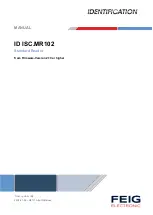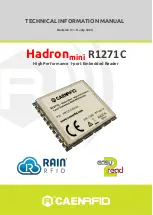
ZIP CHAIN LIFTER
ZIP CHAIN LIFTER
Basic Structure
Handling
▶
Always use ZIP CHAIN LIFTER within the allowable load and the allowable lifting speed. Exceeding either of these ranges may damage the lifter.
▶
Under no circumstances should the lifter be used out of nominal stroke, even when operating with no load. Exceeding the nominal stroke range may damage
the lifter. Do not subject the lifter to sudden impacts under any circumstances.
▶
Ensure that foreign substances such as dust and hot chips do not attach to or enter ZIP CHAIN or any other movable components or detection units. Such
substances will accelerate wear in the unit and may lead to serious trouble such as chain fracture or damage to moving parts. Take appropriate measures to
prevent foreign particles from entering the lifter.
In addition, use a safety fence around the lifter to prevent entry into the space under the table frame.
▶
Be sure to design the sequence circuit so that the holding brake of the motor operates to prevent the load from dropping when operation is stopped.
▶
Never use the lifter with contact stop. Using the lifter with contact stop may cause serious damage to the lifter.
▶
Some areas of the lifter may become hot. Keep hands or any other part of the body from coming in contact with such areas. Failure to do so may result in burn
injuries.
▶
Stop operation immediately if an error occurs. Failure to do so may result in electrical shock, injury or fire.
▶
Do not use the built-in mechanical brake for stopping even in an emergency. Be sure to use control logic that activates the mechanical brake after deceleration
by the dynamic brake. For details, refer to the motor manufacturer’s instruction manual.
Operation
Transporting
Secure ZIP CHAIN LIFTER using the four holes on the base frame corners, and transport using a crane.
When transporting by a forklift, carry ZIP CHAIN LIFTER by balancing the entire device with the base frame on the forks.
* Do not carry the lifter by inserting the forks under the table frame.
Installation
Install the lifter on a flat and level surface. Secure the lifter in place before operation.
The fixing holes/rigging mounts are located on the four corners of the base frame. (See the above equipment overview.)
1. Ensure safety during maintenance and inspection, and always use
the maintenance bar.
Always use the maintenance bar during maintenance or inspection below the table
frame.
Failing to prevent the table frame from falling down may cause serious injury or death.
Remove any load from the lifter.
Be sure to remove the maintenance bar when restarting operation.
Note: Never modify the maintenance bar. Modification may lead to serious accidents.
Holding the table frame using a crane will be a fail safe.
Inspection
Check for abrasion powder
coming from
between the plates.
Check for excessive
roughness of the rollers.
Check for abrasion powder
coming from
around the rollers.
Check for broken rollers.
2. Inspect ZIP CHAIN (at least once a month).
(1) Remove any objects being conveyed.
(2) Implement fall prevention measures to ensure the lifted portions do not fall.
(3) Check the entire length of ZIP CHAIN for the following.
▶
Abrasion powder (reddish-brown) coming from between the plates
▶
Abrasion powder (reddish-brown) coming from around the chain rollers
Lubricate the chain immediately if either of the above are found.
▶
Broken rollers
▶
Chain roller roughness caused by wear, noticeable by touch
Discontinue use and contact a Tsubaki representative if either of the above are
found.
Maintenance bar
Fixing holes/rigging mounts
Table frame
Scissors
ZIP CHAIN unit
Drive section
Base frame
①
②
③
ZIP CHAIN LIFTER
TYPE
MAX WEIGHT
SPEED
STROKE
MFG NO.
DRAWING NO.
▶
The three-phase motor is supplied with temporary cable (for power and brake). When operating ZIP CHAIN LIFTER for the first time,
do the actual wiring after raising the table frame by temporary cable. Do not use temporary cable for actual operation.
Check for the following when ZIP CHAIN LIFTER is delivered.
▶
Check the nameplate to verify the model number (1), manufacturing number (2), and drawing
number (3) match the requested product (see Fig. 1).
▶
Verify that all of the peripheral components are included.
▶
Check for damage that may have occurred during transportation.
▶
Check for any loose bolts or nuts.
Fig. 1 – Reading the nameplate
Include the model number (1), manufacturing number (2),
and drawing number (3) when contacting Tsubaki with
any problems or questions.
Checking the Item Upon Arrival
(Servomotor control)
21
22
Содержание ZIP CHAIN LIFTER
Страница 1: ...Meshing chain linear motion devices ZIP CHAIN LIFTER ZIP MASTER ...
Страница 14: ...13 M E M O ...
Страница 38: ...37 M E M O ...
















































